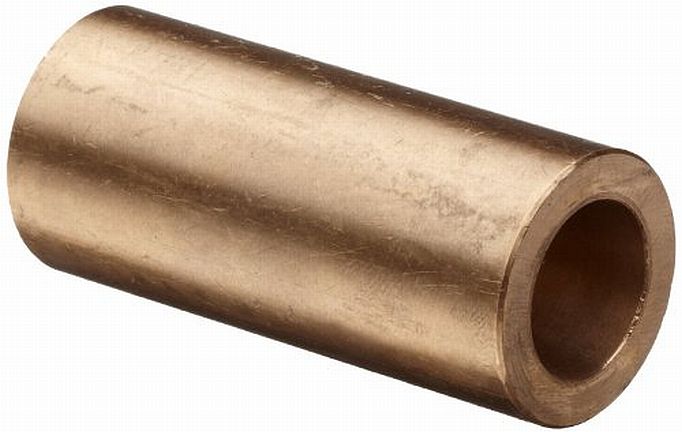You have no items in your shopping cart.
0
You have no items in your shopping cart.
One thing that every slackline has in common (besides Rodeo Lines) is that it has to be tensioned. One of the most common and practical ways to tension your slackline is with a pulley system. This article is the beginning of a series of articles that will go in to great depth about each component of a pulley system. In this article we will be talking about the main component of your pulley system: the main pulleys.The main pulleys are one of the most important aspects of your pulley system as they determine your theoretical and actual mechanical advantage. The better main pulleys you have, the better your mechanical advantage will be, the easier it will be to tension your slacklines.There are FIVE characteristics to look for when considering different main pulleys for your tensioning system:
I will explain each of these characteristics in detail below.
In general, you will notice that a pulley that uses ball bearings will spin much easier and have significantly less friction compared to a pulley which uses bushings.
A bushing (also referred to as a plane bearing or sleeve bearing) is just a sleeve made of some kind of material (typically nylon or bronze) which spins around the axle of the pulley.

As you can imagine, quite a lot of the inner surface of the bushing is in contact with the axle while the pulley is spinning. This results in a large coefficient of friction, which reduces the efficiency of the bearing, which in-turn, makes tensioning your slackline significantly harder compared to using a pulley with bearings.
A ball bearing consists of three parts: the inner sleeve, the middle layer, and the outer sleeve. The middle layer is filled with machined balls which spin around the inner sleeve with the outer sleeve.

As you can see, a ball bearing has much less surface area in contact with the moving parts, thus minimizing the friction involved with tensioning a slackline. The lower the friction in your pulley system, the easier the pulling is.
Also, you will find that many pulleys come with ball bearings which are ‘sealed'. What this refers to is a plate that fits on the side of the bearing which protects the machined balls from debris (e.g. dust particles, dirt, grass, etc…). This is very important because it's extremely difficult to replace just a bearing in a pulley, so it's worth it to have this shield in place in order to protect the bearings on your pulleys.
With respect to the price of pulleys, it will always be a wise decision to spend a few extra dollars to get the pulleys which come standard with sealed ball bearings as opposed to bushings. This will enable you to reduce the effort involved with tensioning your slackline and be able to use that energy for walking the line instead.
As the limits of slacklining get pushed further and further, the loads that we are dealing with are growing at an equal rate. This means that the strength of our pulley system has never been as important. It's important to remember that the bigger our margins from the breaking strength of our pulleys, the better. On a recent 1620 ft. (494m) line that was rigged, we had a tension of 5,100 lbf on the line. This kind of load on a pulley which is rated at just 6,000 lbf would not give us much of a margin to work with. Any small fluctuation in the tension could cause the pulley to explode, which could be potentially fatal. This is why it's especially important to get pulleys which are rated well above the tensions that you are rigging to.
A good rule of thumb for looking for pulleys which are very strong is to look for companies that use the 3-sigma Minimum Breaking Strength (MBS) testing procedure. This is a method of testing which involves breaking a large sample of items, find the average and standard deviation of the breaking strength of the items broken, then rating the item at 3 standard deviations below the average. This guarantees that 99.7% of the items that come from the manufacturer will be stronger than that rated strength. One company that uses this procedure is SMC. Their pulleys (especially the 3" Double PMP's) are one of the best on the market for our purpose.
As our lines get longer and longer, the weight of all the gear starts to become an issue. If you are anything like me and like to slackline by yourself from time to time, bringing a large backpack full of heavy slackline gear can be quite exhausting. This is why finding a pulley which has a moderate weight is so important. The pulleys offered in our shop offer some of the best strength-to-weight ratios on the market! These pulleys also offer very high efficiency compared to other pulleys on the market.
There are four aspects to the dimensions characteristic of pulleys, each being equally important as the others. The first one we will look at is the overall size of the pulley.
Sometimes when rigging a line, you will notice that a larger pulley will get in the way of your rigging. This is more apparent on smaller lines under 100 feet in length. Having big pulleys for this size of line will make walking the line a bit harder than if you had smaller pulleys. This mainly has to do with the weight of the pulleys, but a bigger pulley is typically heavier than a smaller pulley.
Another time when the overall size of the pulley is important is if you are on an Alpine adventure where pack space is of the upmost importance. A smaller pulley takes up less room in a pack, therefore leaving you with more room for other things.
The next dimensional aspect that is important on pulleys is the sheave size. Often times a manufacturer will advertise that their pulley has a certain ‘sheave size'. This refers to the size of the outer part of the spinning wheel on a pulley.
Some pulleys advertise the tread size rather than the sheave size. Do not mistake this with the sheave size though because it is referring to the inner part of the rotating wheel on the pulley.
It's important to note that a pulley with a bigger sheave will have less friction than a pulley with a smaller sheave. This is due to the torque involved while pulling tension with pulleys. The further away from the center of a wheel you are, the easier it is to spin that wheel. So, with this in mind, a pulley with a 3" sheave will have 50% less friction (theoretically) than a pulley with a 2" sheave.
Next on the list is Anchor Hole Size. With Slacklining, it's nice to be able to fit a shackle through the anchor hole of a pulley for different rigging techniques. A lot of pulleys on the market do not have big enough anchor holes to fit even the smallest of shackles through (in any direction).
The problem with this characteristic is that no pulley manufacturers advertise the exact size of their pulleys' anchor holes. In our Shop you will find that the pulleys we carry have the size of the anchor hole listed in the technical specifications of the product.
The last on the list of dimensions is the becket hole size. The hole at the bottom of the pulley that is cut out of the center plate of the pulley is referred to the becket hole. This is where you will typically attach your rope for your tensioning system. The size of this hole is important for using different pieces of hardware to attach your rope to your pulleys. I like to use a very small chain at this point in the pulley system because it has the lowest profile possible for such a connection. The smaller the profile of your rope connection point, the closer you can bring the pulleys together when tensioning your line. This can be important on highline rigging where the pulley system is hanging out over the edge of the cliff.
Last on our list of pulleys characteristics is the price of the pulley. As with most things, you get what you pay for with pulleys. A pulley which has sealed ball bearings, is very strong, has a moderate weight, is not too big, has a large sheave, has a large anchor and becket hole will typically be more expensive than a pulley that does not have these characteristics. It's important to note that if you invest in the right pulleys from the beginning, they will last you for the rest of your slackline career, provided you take good care of them. This can save you a lot of money in the long run.
| Product | Price | Quantity | Options | |||||
|---|---|---|---|---|---|---|---|---|
| Features |
| Availability: |
| Price |
| Options |
| Actions |

Newer Post →
0 comments